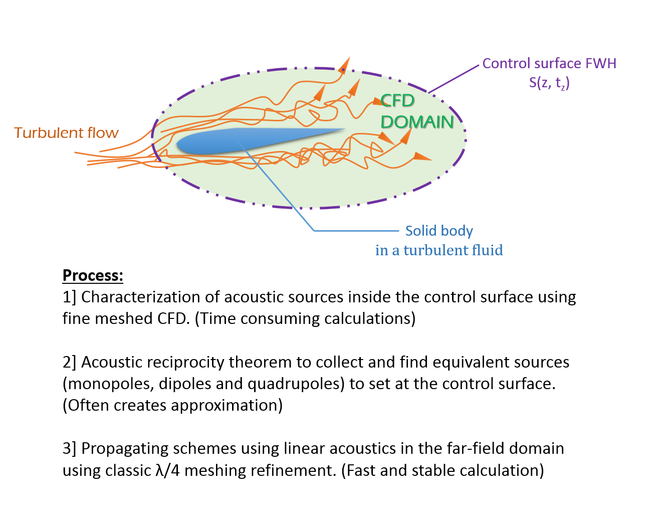Aeroacoustic analogy
Acoustic analogies are usually used in numerical aeroacoustics to reduce aero-acoustic sound sources in a simple emitter types. They are therefore often referred to as aero -acoustic analogies.
In general, the aero-acoustic similarities of the compressible Navier -Stokes equations ( NSG) are derived. The compressible NSG be formed into various shapes of inhomogeneous acoustic wave equation. Within these equations describe source terms, the acoustic sources. They consist of both pressure and velocity fluctuations as well as from stress tensors and force terms.
To make the source terms of the acoustic variables independently, approximations are introduced. In this way linearized equations are derived describing the propagation of the acoustic waves in a homogeneous medium at rest. The latter is excited by the acoustic source terms, which are determined from the turbulent fluctuations. Since the aeroacoustics is described here by equations of classical acoustics, these methods are called aeroacoustic analogies.
The light Hill analogy considered first free flow, such as in a jet engine. The transient fluctuation of the flow are represented by a distribution of Quadrupolquellen in the same volume.
The Curle analogy is a formal solution of the Lighthill analogy that can be considered hard surface. However, here the normal speed is set to zero at the surface.
The Ffowcs Williams - Hawkings - analogy does not have this limitation. It is valid for aero-acoustic sources with a relative motion to a hard surface, such as is the case in many technical applications, eg in the automotive industry or in aviation. The calculation includes quadrupole, dipole and monopole terms.










